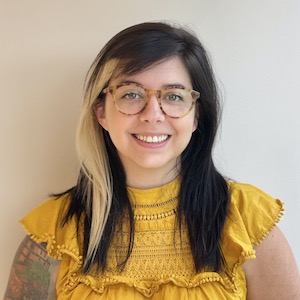
Gustav Robert Kirchhoff was a German physicist famous for his vast contributions to the study of spectroscopy, electrical circuits, thermochemistry, and more. Kirchhoff developed laws and theories fundamental to electrical engineering, heat capacity in chemical reactions, and the composition of light emission from incandescent objects. He even helped discover two new elements! In honor of what would have been his birthday, here is a look at Kirchhoff’s legacy.
Lifelong Student and Teacher
Gustav Kirchhoff was born on March 12, 1824 in what is now Russia to parents who valued a good education. He studied mathematics and physics at the Albertus University of Königsberg, where he married Clara Richelot, the daughter of his esteemed mathematics professor Friedrich Julius Richelot. He then moved to Berlin and taught at the University of Breslau. Kirchoff made most of his career discoveries while researching and teaching at the University of Heidelberg before becoming the first chair of theoretical physics at the University of Berlin.

A portrait of Gustav Robert Kirchhoff.
Contributions to Physics
Gustav Kirchhoff’s extensive research and desire to learn led to major developments in physics. He expanded on the work of Georg Ohm by creating equations commonly used in electrical engineering. The equations show equal values pertaining to voltage in the lumped element model of electric circuits. The Kirchhoff equations, popularly used in fluid mechanics, define the motion of rigid bodies in ideal fluids. Also, his law of thermochemistry determines the variation of heat in a chemical reaction by the difference in heat capacity between products and reactants.
Prior to Kirchhoff’s studies, people thought the ratio for emission to absorption in thermodynamic equilibrium was the same for all bodies. Kirchhoff found that this was not the case. In fact, he first coined the term black body radiation to explain how in thermodynamic radiation, a “perfect black body” absorbs all of the radiation that strikes it.
Spectroscopy
While working at the University of Heidelberg, Kirchhoff collaborated with friend and colleague Robert Bunsen, inventor of the Bunsen Burner, on spectroscopic research. Through their work, they discovered cesium and rubidium. Kirchhoff also applied his law of thermal radiation to spectroscopy in his three laws of spectroscopy, which describe spectrum emissions through different elements.
Under the first law of spectroscopy, a hot solid emits light with a continuous spectrum. Under the second law, a hot tenuous gas emits light with different colors dependent on the energy level of atoms in the tenuous gas. This is due to spectral lines at discrete wavelengths. The third law states that a hot solid surrounded by a tenuous gas cooler than the object emits light with a mostly continuous spectrum. Gaps occur at discrete wavelengths, which again depend on the energy levels of the atoms in the gas. Although some of Kirchhoff’s theories needed to be further developed, future research on this topic led to the development of quantum mechanics.

Gustav Kirchhoff (left) standing with lifelong friend and colleague Robert Bunsen (right).
The Kirchhoff-Love Plate Theory
The Kirchhoff-Love Plate Theory was developed in 1888 by Augustus Edward Hough Love using assumptions originally proposed by Kirchhoff. He built a two-dimensional mathematical model to analyze both deformations and stress in thin plates subjected to forces and moments. He found that a mid-surface plane can represent a 3D plane in 2D form.
We recently mentioned the Kirchhoff-Love Plate Theory in a blog post on cloaking. Researchers in Europe discovered a new framework for achieving exact cloaking for flexural waves in thin elastic plates. These plates were represented mathematically by Kirchhoff-Love plates, as is common practice when dealing with thin plates. It has been years since Kirchhoff studied in his lab in Germany, and he’s still making waves…

An illustration from a simulation of cloaking for flexural waves in Kirchhoff-Love plates. Provided by Daniel J. Colquitt for the blog post “Cloaking Advancements for Flexural Waves in Elastic Plates“.
A Lasting Legacy
Gustav Kirchhoff received many awards for his research during his lifetime, but the real acclaim comes from what his success means to others in the field. The Bunsen-Kirchhoff Award, started in 1990, celebrates leaders in spectroscopy research and offers an endowment for further development of projects. And in 2002, the University of Heidelberg opened the Kirchhoff Institute of Physics so students can expand upon the physicist’s important work.
Happy birthday, Gustav Kirchhoff!




Comments (0)